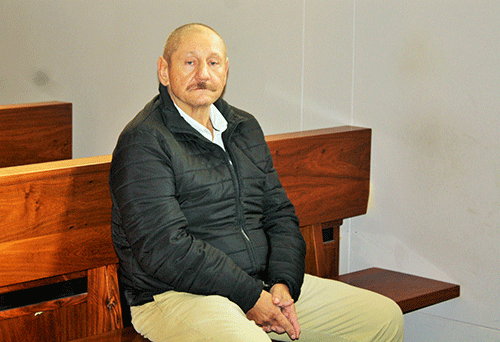Ernst Lichtenstrasser’s denial of guilt, lack of remorse and attempts to defeat the course of justice earned him two life sentences.
Windhoek High Court Acting Judge Christi Liebenberg yesterday sentenced Lichtenstrasser to two life terms after finding him guilty on two counts of murder and six further charges in November last year.
The judge sentenced Lichtenstrasser to life imprisonment on the murder conviction of Eckhart Mueller who was the executive head of the Namibia Institute of Mining and Technology (NIMT) situated in Arandis. He sentenced Lichtenstrasser to another life term in prison for the murder of Mueller’s second-in-charge, Heimo Hellwig. The judge further sentenced him to 16 years on other charges, including arms and ammunition charges, and a charge of attempting to defeat the course of justice and a charge of theft.
Judge Liebenberg said Lichtenstrasser felt no remorse for his evil deeds, as he until the end maintained his innocence. Mueller and Hellwig died in the morning hours of 15 April 2019 after being gunned down at the entrance of the NIMT offices.
He further faced two charges of possessing a firearm without a licence, and another charge of possessing ammunition without a licence, defeating or obstructing the course of justice, theft, and the unauthorised supply of a firearm and ammunition. He was convicted on all charges by Liebenberg.
The judge sentenced Lichtenstrasser to three years for possessing a firearm without a licence, a further one year for possessing ammunition, four years for attempting to defeat the course of justice, four years for theft, three years for another count of possessing a firearm and one year for unauthorised supply of a firearm.
It is not clear whether the sentences are to run concurrently or consecutively, but according to Namibian laws, the most severe sentence that can be imposed is a one life sentence, which culminates in a 25-year term.
The judge said Lichtenstrasser showed no respect for the sanctity of human life and that the killing of the two men could only be described as “callous and extreme”.
During the verdict, the judge said there was no doubt in his mind that Lichtenstrasser was guilty of the horrendous killings. While there was no eyewitness to the brutal murders, the judge said, the evidence as a whole adduced during the trial established his guilt beyond a reasonable
doubt. “Although the breaking down of a body of evidence into different components is quite useful, one must guard against a tendency to focus too intently on the separate and individual parts thereof, instead of evaluating it together with the rest of the evidence. When dealing with circumstantial evidence, the court should not approach such evidence on a piecemeal basis and subject each individual piece of evidence to a consideration of whether it excludes the possibility that the explanation given by an accused is reasonably true,” the judge stated. In this instance, Liebenberg went on, the cumulative effect of the circumstantial evidence led to one inescapable conclusion – that it was Lichtenstrasser who murdered the two men.


